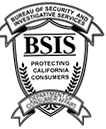Fraud and theft are common issues that retail businesses face, leading to losses in the billions per year. Therefore, loss prevention should be part of your profit and growth strategies. Implementing various retail loss prevention stategies helps prevent losses arising from error and other deliberate actions. Loss prevention may include several strategies, including surveillance, interrogation, and investigation into your business. This blog delves deeper into loss prevention tips for your retail business.
Loss Prevention Overview
Loss prevention in retail businesses includes the measures taken to reduce fraud, theft, and human errors resulting in business losses. Loss prevention aims to help businesses realize the most profit from their operations by eliminating or reducing the incidences of loss within the internal retail environment.
Some of the leading causes of loss for retail businesses include:
-
Shoplifting
Shoplifting continues to be a problem for retailers. While shoplifting reduced during the pandemic, the resumption of in-store shopping brought back the vice, meaning that retailers must reinstitute measures to manage shoplifting in their stores.
-
Employee theft
Employee theft is a global phenomenon that costs retailers trillions every year. Some forms of employee theft include theft of office supplies, time, corporate intelligence, and products. Employees also steal from retailers by tampering with the cash register, voiding transactions, and sliding.
-
Return fraud
Return fraud occurs in various ways. For instance, fashion retailers encounter this fraud when customers buy an item to return it after they've used it. Other forms of return fraud include returning stolen goods for refunds, price tag swapping, price arbitrage, cross-retailer return, open-box fraud, and receipt fraud (returning items on a stolen, falsified, or reused receipt).
-
Vendors fraud
In addition to employees and unscrupulous customers, vendors can also be the source of a retailer’s shrinkage. Vendor fraud occurs in different ways, among them stock theft and overcharging.
The digital environment also presents an additional risk when businesses run digital storefronts. These risks include cyberattacks, gift card scams, and return fraud.
These risks create shrinkage; when shrinkage is higher, your profit margin shrinks. Without the right loss prevention measures, you could soon be operating at a loss or go out of business. Most businesses deal with shrinkage by raising the cost of their products.
However, you can apply more effective loss prevention strategies to keep your prices fair and your losses lower. Here are some common loss prevention strategies.
-
Change Your Store Layout
Store design can encourage or discourage shoplifting. The goal is to have a well-organized, well-lit space free from blind spots and easily accessible to your customers and staff. For a retailer, this means being aware of shelve heights and displays. It also means showcasing valuable stocks in well-lit, well-staffed areas.
Here are some aspects to keep in mind when creating a customer-friendly store that also incorporates loss prevention:
-
Ensure good lighting throughout the store. Poor lighting and dark areas within the store create a comfortable and friendly environment for shoplifters. Keeping your store well-lit improves customer experience and makes thieves less comfortable. The visibility also is better, allowing your staff to notice and deal with suspicious behavior.
-
Use secure shelving and displays, especially for valuable items. These displays allow customers to view the products they wish to purchase and keep them safe from shoplifting.
-
Adjust the layout of the store. In addition to lighting and secure shelving, how you position items within the store can lead to better loss prevention. For example, keeping valuable items in secure displays closer to a POS station allows your staff to monitor them yet does not prevent customers from viewing them.
-
Eliminate blind spots in your store by installing mirrors. This way, your staff can monitor customers without being in their face.
-
Position employees near high-theft areas and exits to maximize visibility.
-
Position your exits in areas with a higher population of employees to discourage shoplifting.
-
Always keep the shelves well-organized. A disorganized display is an easy target for shoplifters as it's harder for employees to determine what a customer is looking at or whether something is missing on the shelves.
-
Keep best-selling items in high-traffic, high-visibility areas to make them easily accessible to customers while allowing staff to watch shoplifters.
If you struggle with getting the best store layout for product visibility and loss prevention, consult a store layout expert to help you make the most of your space.
-
Surveillance
Retail businesses can access multiple surveillance tools and systems to keep their stores safe. CCTVs are the most popular and often used in strategic points within the store to enhance security. These cameras help retailers monitor customers more closely and identify incidents staff could have missed.
In addition to surveillance cameras, retailers can use security tags and labels on their products and the doorway to monitor different items within the store. Security tags and labels on a product are usually a deterrent to shoplifting.
Most retailers use one or more of the three common security tags; benefit denial, visual deterrent tags, and electronic article surveillance tags.
Electronic security tags are the most effective. They work alongside antennas located near the entrance or exit of a store. When a shoplifter carries the item out of the store, an alarm goes off, alerting staff of the potential theft.
Visual tags are designed to deter shoplifters. They give the appearance that an item has an electronic tag. Visual deterrent tags are meant to discourage opportunistic shoplifters.
Benefit denial tags render the stolen merchandise useless when the shoplifter attempts to remove a tag. Some of the common benefit denial tags include ink tags or bottle keepers. These tags have a security mechanism that renders the stolen item useless if removed incorrectly. For instance, an ink tag contains permanent ink that stains the clothing item. On the other hand, an Alpha benefit denial keeper ruins CDs and similar items if not removed properly by the store’s personnel.
Retailers can also access merchandise-specific tags, for instance, fashion accessory tags for clothing and fashion items and bottle caps for liquor.
-
Improve Your Customer Service
Customer loyalty can be an effective loss prevention strategy. Implementing customer service techniques allows you to provide a satisfactory customer experience while preventing shoplifting. Some of the strategies you can apply include:
-
Improve your staff numbers to have enough people working in the store anytime. This ensures that there's always someone in the store, making it harder for shoplifters to target you.
-
Greet your customers as they enter the store. This lets them know that you recognize their presence in the store.
-
Be attentive to customers.
-
Provide a receipt for all purchases and request one for any refunds. Destroy any discarded receipts.
-
Inspect products such as baskets and shoeboxes, which could easily be used to hide shoplifted items.
-
Train Your Employees
Employees are a great asset to retailers regarding sales and profit. However, few retailers have trained their employees as part of their loss prevention strategies. Loss prevention training for employees brings together all other loss prevention elements that you implement in your store.
Loss prevention should be part of your employee onboarding process. Familiarize them with:
-
Written policies about theft, shoplifting, returns, and defective products. Train your employees on the store's policy on dealing with suspected and confirmed shoplifting cases.
-
Educate your employees on safety phrases they can use to alert other employees of ongoing or suspected theft.
-
Tell-tale signs that a shopper could be attempting to shoplift. These signs include changing price tags, repackaging products, and looking around constantly to know whether they are being watched.
Your employees should also learn to work with the cash register, take inventory, and deal with suppliers.
Another way of incorporating your employees into your loss prevention strategy is by creating a sense of loyalty and pride in your employees.
-
Use Signage
Signage, when used correctly, is an effective loss prevention tool for retailers. It involves strategically placing protective signage to warn potential offenders that their acts will be monitored and dealt with.
Research on the impact of signage shows that most customers still buy from stores with such signage and others even feel safer when the store they shop in has these signs.
-
Use Employee Tracking Technology
Inside jobs are often a leading source of shrinkage for retailers. Whether employees engage in malicious activities to defraud the retailer or make mistakes that cost the business, retailers must be prepared to mitigate these losses.
You can use technology to your advantage to:
-
Monitor employee movement in the store.
-
Monitor transactions using smart product sensors.
-
Digitally track employee time management.
Ensure that you research the legal implications and requirements when tracking employees. For instance, each employee should know what the business is tracking or monitoring. Monitoring should also not violate the employees' privacy.
-
Use Point of Sale (POS) Analytics to Track Inventory
Employee theft is a common challenge that retailers face. Point of Sale systems can provide a crucial transactional history that helps retailers track inventory and compare it against the sales they have made.
Point of Sale systems can help detect suspicious transactions. For example, you can view the voided transactions to determine whether these are legitimate or fraudulent. You can also use the POS system to determine how often the cash register is opened without any recorded transactions.
You can take your POS analytics further by incorporating video surveillance footage to bring more insight into the activity at various store point-of-sale sections. For instance, if a cashier voided a transaction, you can use video surveillance to determine whether the customer left with the items. You can also catch on video whether an employee takes money from the cash register.
-
Prevent Employee Theft
Employee theft is a common problem for retailers. It can be mistaken for shoplifting by customers or as a human error. Awareness of how employees steal from businesses is the first step toward setting up the systems to prevent this theft. The most common forms of employee theft include:
-
Stealing items from your business either for personal use or resale.
-
Take cash before entering it into a register or the books. Employees may attempt to hide this by deleting paid invoices or applying discounts, yet charging the customer the full amount.
-
Under ringing, where the employee charges the customer for the right number of items, they ring some of the items, taking the balance for themselves.
-
Giving friends and family discounts (sweethearting).
-
Time theft (leaving too early, showing up later, taking excessively long breaks). This leads to loss for your business as you still compensate them for the hours they do not work.
Identifying employee theft can be tricky for the untrained mind. However, you can set up measures to minimize or stop its occurrence at your store. Here are some strategies to stop employee theft:
-
Take inventory more often to catch any discrepancies in stock and sales.
-
Hire enough staff, especially on busy days.
-
Set up policies that employees must follow when overriding prices, offering discounts, or voiding transactions.
-
Work on developing a positive company culture where your employees feel appreciated.
-
Use a managed access system and a verified security system.
-
Implement a Strict Return Policy
A return policy is a must-have loss prevention tool for retailers. It discourages certain types of crime (such as shoplifting) and reduces the number of return-related fraud. Developing a strict return policy and educating your staff about it can produce significant results for your enterprise. Here are some of the tips to keep in mind when developing a return policy:
-
Have a strict return window for merchandise bought from your store. This can discourage fraudulent individuals from returning items using a new receipt.
-
Require the customer to produce a valid receipt. This reduces the possibility that a customer will shoplift your store to return the item and get a refund.
-
Ensure that the returned item matches the SKU on the receipt. This works to prevent return fraud using invalid or fabricated receipts.
-
Check items for signs of use, especially clothing items.
-
If you deliver merchandise to customers, track shipments and have the customer sign when they receive it. This prevents fraud where customers claim not to have received their item.
-
Require the customer to provide identification when returning an item.
Should You Invest in Loss Prevention?
Loss prevention continues to be a challenge for retailers big and small across various industries. The threat of shrinkage has spread from physical stores to digital stores, creating the need for retailers to up their loss prevention game.
For retailers who are yet to implement loss prevention strategies, here are some signs that you should.
-
Increasing Shrinkage
Retailers have some level of shrinkage. However, when it starts increasing beyond normal for your business, you should pay attention to what's happening. This allows you to identify any existing security vulnerabilities being exploited. Engage a retail loss prevention specialist if you cannot identify where the weaknesses are.
-
It’s a Busy Season
Shrinkage goes up in seasons when sales typically go up. Whether your shrinkage increases at this time or not, it's a great precaution to take to prevent loss. You can hire security personnel and temporary staff to man stores and change your store layout to deter theft.
-
You Handle a Lot of Cash
Retailers who handle significant amounts of cash are easy targets for criminals. If you are one of these retailers, use measures such as cameras and have a secure safe in a less obvious location.
If you do bank runs, carry the cash less obviously for safety. Even businesses that don't deal with cash should be aware of credit card and chargeback fraud risks.
-
Your store has Multiple Access Points
Multiple access points are harder to monitor as it’s harder to keep track of the people entering or exiting a store. If your store has multiple access points, you should implement loss prevention strategies for exit and entryways, including hiring security and using video surveillance and electronic systems to detect items that have been shoplifted from the store.
-
You’ve been Targeted Before
Whether it's shoplifting or a robbery, if you have been targeted before, you may continue being targeted until you deal with the weaknesses exposing your business to shrinkage.
-
You Have Employees
Employees are essential to a retail store, but dishonest employees could cost you more if they steal merchandise or money from your business. If you intend to hire employees for your store, be ready to institute anti-theft policies and means to monitor your stock, cash, and employee behavior.
Find a Retail Loss Prevention Specialist Near Me
A common struggle amongst retailers is not knowing where to start with their loss prevention strategies. In other cases, you have implemented a few strategies, but your business still experiences shrinkage. Working with a loss prevention specialist like Green Knight Security is a great first step towards mitigating losses from shrinkage and expanding your profit margins. We offer a wide range of solutions for businesses of all sizes in Los Angeles. Call us at 844-457-8326 if you are seeking security solutions for your business.







